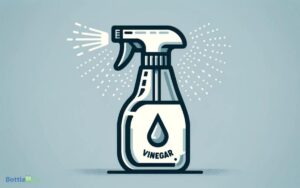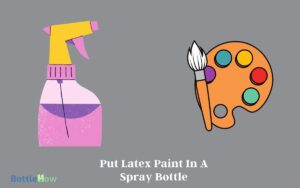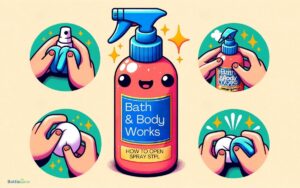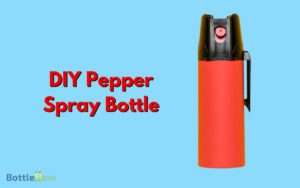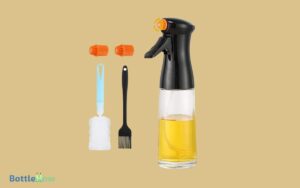Spray Bottle to Remove Ear Wax: A Complete Guide!
To safely remove excessive ear wax, you can utilize a spray bottle filled with a saline solution. Choose a spray bottle that allows adjustable nozzle settings for a gentle dispersion, ensuring it’s made from non-toxic, BPA-free materials.
Prepare the solution by dissolving non-iodized salt in sterilized distilled water, and you may add a small amount of hydrogen peroxide to enhance wax breakdown.
When applying, sit comfortably with the affected ear facing up, gently insert the nozzle at the ear entrance, and spray. This method supports controlled cleaning and minimizes the risk of infection.
Discovering more on this topic could further enhance your understanding and effectiveness in ear care.
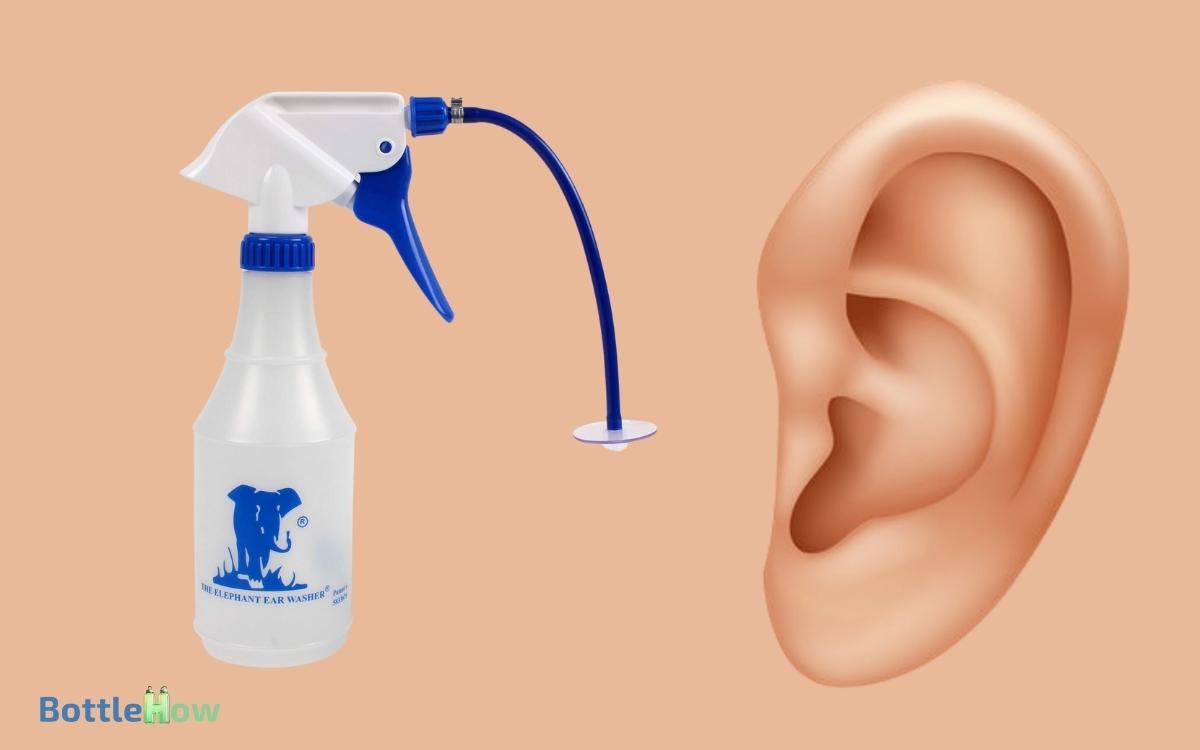
Key Takeaways
Understanding Ear Wax Buildup
Ear wax, medically known as cerumen, naturally accumulates in your ear canal to protect and lubricate the ear. However, excessive buildup can lead to discomfort, hearing loss, and even infection.
It’s important to understand that the ear has a self-cleaning mechanism, where old ear wax is gradually pushed out of the ear canal by new wax and jaw movements. Yet, for some individuals, this process doesn’t suffice, causing wax to accumulate excessively.
This is particularly common in older adults, individuals with narrow or hairy ear canals, and those who use hearing aids or earplugs frequently.
Managing this buildup responsibly is essential to maintaining ear health and preventing complications that could impair your ability to serve and care for others effectively.
Benefits of Using a Spray Bottle
Using a spray bottle for ear wax removal offers a gentle, effective method to manage excessive buildup.
This technique minimizes discomfort as you’re able to control the pressure and volume of the solution administered into the ear canal.
It’s especially beneficial for individuals with sensitive ears or those who are apprehensive about more invasive procedures.
The fine mist from the spray bottle guarantees an even distribution of the cleaning solution, facilitating the softening and eventual removal of the wax without aggressive intervention.
Additionally, you’ll find this method supports hygiene, as it reduces direct contact, thereby lowering the risk of infections.
It’s a safe, user-friendly option that empowers you to maintain ear health with confidence and ease.
Choosing the Right Spray Bottle
Selecting an appropriate spray bottle is crucial for the effective application of a solution that facilitates ear wax removal. The design and functionality of the bottle should ensure a fine mist or gentle stream to prevent any discomfort or damage to the ear canal. When creating a DIY ear wax spray bottle, it’s important to choose one that provides adequate control over the spray pressure for safe and efficient use. Additionally, the material of the bottle should be durable and easy to clean to maintain proper hygiene.
When you’re looking to purchase one, consider these factors:
- Nozzle Adjustability: Choose a bottle with a nozzle that offers fine mist settings to guarantee gentle dispersion of the solution.
- Material Safety: Opt for a bottle made from non-toxic, BPA-free plastic to prevent chemical leaching.
- Size and Capacity: A smaller bottle (around 100-150 ml) is ideal for precision and ease of handling.
- Durability: Select a bottle that’s robust and can withstand frequent use, ensuring it doesn’t crack or leak under pressure.
These considerations will help you provide safe and effective care in ear wax management.
Preparing the Solution
Once you’ve chosen the appropriate spray bottle, it’s important to prepare the ear wax removal solution carefully. Start by sterilizing the bottle and any tools you’ll use; cleanliness prevents infections.
You’ll typically mix a gentle, isotonic saline solution, which matches your body’s natural salinity, ensuring comfort during application.
To make this, dissolve a teaspoon of non-iodized salt in about a pint of distilled or previously boiled water. Make sure the salt is completely dissolved; undissolved particles can irritate the ear canal.
Optionally, adding a few drops of hydrogen peroxide can enhance the solution’s effectiveness in breaking down wax.
However, you must use this additive cautiously as it can be drying or irritating if used excessively or too concentrated.
Step-by-Step Application Process
To start the application process, make sure you’ve thoroughly washed your hands to prevent introducing any bacteria into the ear canal.
Now, follow these detailed steps to safely use the spray bottle:
- Position Yourself Comfortably: Sit or lie down with the affected ear facing upwards.
- Prepare the Spray Bottle: Gently shake the bottle if the solution requires mixing.
- Administer the Solution: Insert the nozzle tip gently into the ear canal and spray the solution as directed. Don’t over-insert to avoid damage.
- Allow the Solution to Work: Remain in the same position for a few minutes to let the solution soften the ear wax effectively.
This method aids in maintaining ear hygiene and comfort effectively.
Safety Precautions and Tips
When selecting a spray bottle for ear wax removal, it’s important you choose one that’s designed specifically for this purpose to guarantee the safety and efficacy of the treatment.
You must avoid spraying directly towards the inner ear as this can lead to significant damage, including potential hearing loss.
Always follow the manufacturer’s instructions closely to minimize any risk of injury.
Appropriate Spray Selection
Selecting the right spray for ear wax removal is crucial for your safety and effectiveness of the treatment.
Here are key considerations to guide you:
- Ingredient Safety: Choose sprays with hypoallergenic ingredients to minimize the risk of allergic reactions. Avoid products with harsh chemicals or potential irritants.
- pH Balance: Look for a spray that maintains a neutral pH, aligning closely with the natural environment of the ear to prevent irritation.
- Dispenser Type: Opt for a spray bottle with a gentle mist dispenser to guarantee even distribution without excessive pressure.
- Medical Approval: Always select products that are medically approved or recommended by healthcare professionals to ensure they’re safe and effective for use.
Avoiding Inner Ear Damage
Make sure you follow specific safety precautions to avoid damaging your inner ear during the wax removal process.
Using a spray bottle for ear wax removal can be important, but it’s vital to employ correct techniques to prevent injury.
| Safety Tip | Reason |
|---|---|
| Use lukewarm water | Prevents shock and discomfort |
| Avoid deep insertion | Reduces risk of eardrum perforation |
| Limit pressure | Prevents damage to inner ear structures |
| Use sterile solutions | Minimizes infection risk |
| Consult a professional | Ensures appropriateness of the procedure |
Employing these guidelines helps guarantee a safe and effective cleaning experience while preserving your auditory health.
Always prioritize your wellbeing by seeking advice from healthcare professionals if you’re unsure about the procedure.
Aftercare and Maintenance
After using a spray bottle for ear wax removal, you must follow specific cleaning techniques to guarantee the device remains effective and hygienic.
Regular maintenance checks are essential to confirm that the spray mechanism and nozzle aren’t compromised.
Additionally, you’ll want to avoid common mistakes, such as overuse or improper storage, which can lead to reduced efficacy or potential harm.
Proper Cleaning Techniques
To maintain peak performance, regularly clean your spray bottle by rinsing it with warm, soapy water and drying thoroughly.
Here’s a concise guide to help you make sure that your spray bottle is always in top condition for safe and effective use:
- Disassemble the Spray Bottle: Carefully take apart the nozzle and tube to guarantee thorough cleaning.
- Use Mild Detergent: Opt for gentle, non-abrasive soaps to avoid damaging the components.
- Rinse with Distilled Water: After washing, rinse all parts with distilled water to prevent mineral build-up from tap water.
- Air Dry Completely: Allow all parts to air dry on a clean towel to prevent moisture buildup, which could lead to bacterial growth.
Routine Maintenance Checks
Consistently monitoring your spray bottle’s components guarantees peak functionality and prolongs its lifespan.
You should conduct a thorough inspection every few months. Start by checking the nozzle for any clogs or damage.
Make sure that the spray mechanism operates smoothly and delivers a consistent mist. Examine the bottle for cracks or leaks that could compromise the solution’s sterility.
It’s essential to routinely replace the spray solution according to the manufacturer’s guidelines to prevent contamination.
Verify the integrity of the seals and gaskets, as these can degrade over time, potentially allowing air and contaminants to enter.
Avoiding Common Mistakes
Maintaining your spray bottle’s upkeep can prevent common mistakes that compromise its effectiveness in ear wax removal.
Here’s how you can guarantee it remains in top-notch condition:
- Regular Cleaning: Disassemble and clean all parts with warm, soapy water weekly to prevent nozzle clogs and bacterial buildup.
- Check Seals and Nozzles: Inspect for wear and tear monthly. Replace damaged parts promptly to maintain peak spray function.
- Proper Storage: Store your spray bottle in a cool, dry place away from direct sunlight to prevent damage to the plastic components.
- Usage Monitoring: Keep track of usage and refill with the correct solution as needed, avoiding overfilling which can lead to leakage and reduced pressure.
Common Mistakes to Avoid
When using a spray bottle for ear wax removal, it’s crucial to avoid overuse, as this can lead to irritation or infection.
Make sure you’re using the correct solution, specifically designed for the ears, as inappropriate fluids can damage the ear canal or eardrum.
Don’t insert the nozzle too deeply; it should remain at the entrance of the ear to prevent any potential harm.
Additionally, maintain a gentle spray pressure. Forceful application can disrupt the natural migration of ear wax and may compact it further, making the situation worse.
Always adhere to the manufacturer’s instructions regarding the frequency and duration of use to optimize safety and efficacy while caring for yourself or others.
When to See a Professional
If symptoms persist despite using a spray bottle for ear wax removal, you should consult a healthcare professional. It’s important to recognize when self-care isn’t enough and professional intervention is needed.
Here are specific signs indicating that it’s time to seek medical advice:
- Persistent Discomfort or Pain: If you’re still feeling discomfort or pain after attempting to clear your ear wax at home.
- Hearing Loss: Noticeable decrease in hearing sensitivity that doesn’t improve post-treatment.
- Discharge or Odor: Any unusual discharge or a persistent foul odor emanating from the ear.
- Vertigo or Dizziness: Experiencing balance issues or dizziness which may suggest an underlying condition not solely related to ear wax.
Don’t hesitate to prioritize your health by seeking professional help.
Conclusion
So, you’ve mastered the art of using a spray bottle to tackle ear wax, a method as simple as it’s effective—if done right.
Remember, while a gentle spray can clear your ears, turning your bathroom into a mini water park isn’t the goal. Stick to the process, avoid the common pitfalls, and keep your ears healthy.
But if things seem off, don’t hesitate to swap your spray bottle for a professional’s expertise. Sometimes, more is just more, not better.

